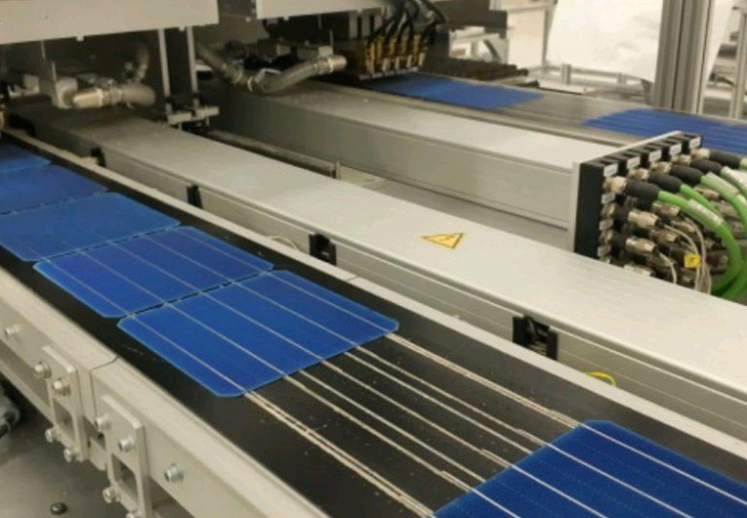https://en.solarbe.com/home/article/info/catId/49/id/5913.html
Supply-chain squeeze: Solar, storage industries grapple with delays, price spikes as demand continues to grow

David McNew via Getty Images
Project developers across the country are seeing the ripple effects of supply chain constraints squeezing both the solar and storage sectors.
Multiple factors are contributing to the problem, experts say, from upstream shortages in labor and equipment parts to more intermediate issues like transportation backlogs and the unavailability of shipping containers. On the storage side, developers have been experiencing tight supply conditions that make it difficult for them to access lithium-ion batteries, as well as other equipment they need to build facilities. The solar sector, meanwhile, has witnessed labor crunches at ports, nautical shipping challenges and other constraints that have contributed to a demand-supply imbalance.
U.S. solar installations were lower than expected in 2021, with gigawatts’ worth of projects pushed into 2022 or later due in part to supply chain and logistics challenges, according to a March report from the Solar Energy Industries Association. About a third of solar capacity scheduled to come online in the fourth quarter of 2021 was delayed by at least one quarter, the report found. Furthermore, developers have postponed at least 8% of the planned capacity for 2022 to 2023 or later and canceled at least 5%, it said.
The project delays and cancellations are not only due to delays in getting products that go into developing a solar project, said Shawn Rumery, SEIA’s senior director of research — they're also because prices have been going up very quickly at the same time, thanks to those supply chain constraints and inflationary pressures.
"It’s putting a lot of price pressure on developers, and just the general uncertainty there is creating a difficult environment in terms of not only developing projects that you already have in your pipeline, but procuring new projects as well," he added.
COVID-19 aftereffects, raw material shortages and logistical challenges
The aftereffects of disruptions caused by COVID-19, and the resulting temporary shutdown of manufacturing in various countries, have likely had the most impact on the supply chain, said Adam Walters, a lawyer with Stoel Rives. In 2021, many U.S. renewables projects were pushed back because of delays in equipment supplied primarily from Asia, and some of these delays continue today, albeit at lower levels.
While supply has been constrained, demand has grown, Stoel Rives partner Morten Lund added. The big uptick in demand for solar panels and batteries over the last couple of years "makes it look like the supply problem is bigger than it is because demand is widening," he said.
The U.S. Department of Commerce's recent announcement that it will go forward with an anti-dumping circumvention investigation of solar cells from four Southeast Asian countries could also disrupt certain solar projects, industry advocates have warned.
On the battery side, the main supply-chain issue is the availability of raw materials, according to Vanessa Witte, senior energy storage research analyst with Wood Mackenzie. Lithium in particular has been in short supply, leading to skyrocketing prices, and the main issue the industry is facing overall at the moment is the supply and demand mismatch, Witte said. Spot prices for battery-grade lithium in China shot up from $11,000 per metric ton early last year to more than $50,000 this February, Morning Brew reported in February.
"There was just an explosion of demand [for lithium] — a lot of that was led by the electric vehicle market," Witte said. Building the manufacturing and raw-material capacity to meet that demand could take time, she added. A new mine, for instance, takes around five years to set up, while a battery manufacturing plant would require at least two years.
"These things just take time to catch up, and that’s really been the source of the issue," Witte said.
The storage industry is also facing logistical issues like transportation delays, which could affect when developers receive the products they need and, in turn, their ability to bring projects online in time. While these delays caught developers by surprise in 2021, many are now taking extended timelines into account when planning their projects, she said.
‘It increases project risk’
The repercussions of supply-chain problems largely depend on where individual projects are in their life cycle, experts said. Where projects already have contracts executed, for instance, equipment suppliers are responding to delays by asking for relief from schedule commitments and, in some cases, for contract adjustments. These negotiations play out under the force majeure clause of the project’s contract, Nate Galer, partner with law firm Mayer Brown, explained. A force majeure clause is a fairly typical clause in most contracts that would basically excuse a party to the contract if something unforeseeable and out of their control occurs.
"That’s really sort of the big legal issue that we’re grappling with a lot in those situations, is how are those delays viewed under the applicable contract’s force majeure [clause]," Galer said.
Potential projects and deals that aren’t yet under contract are trickier to deal with, Galer said.



